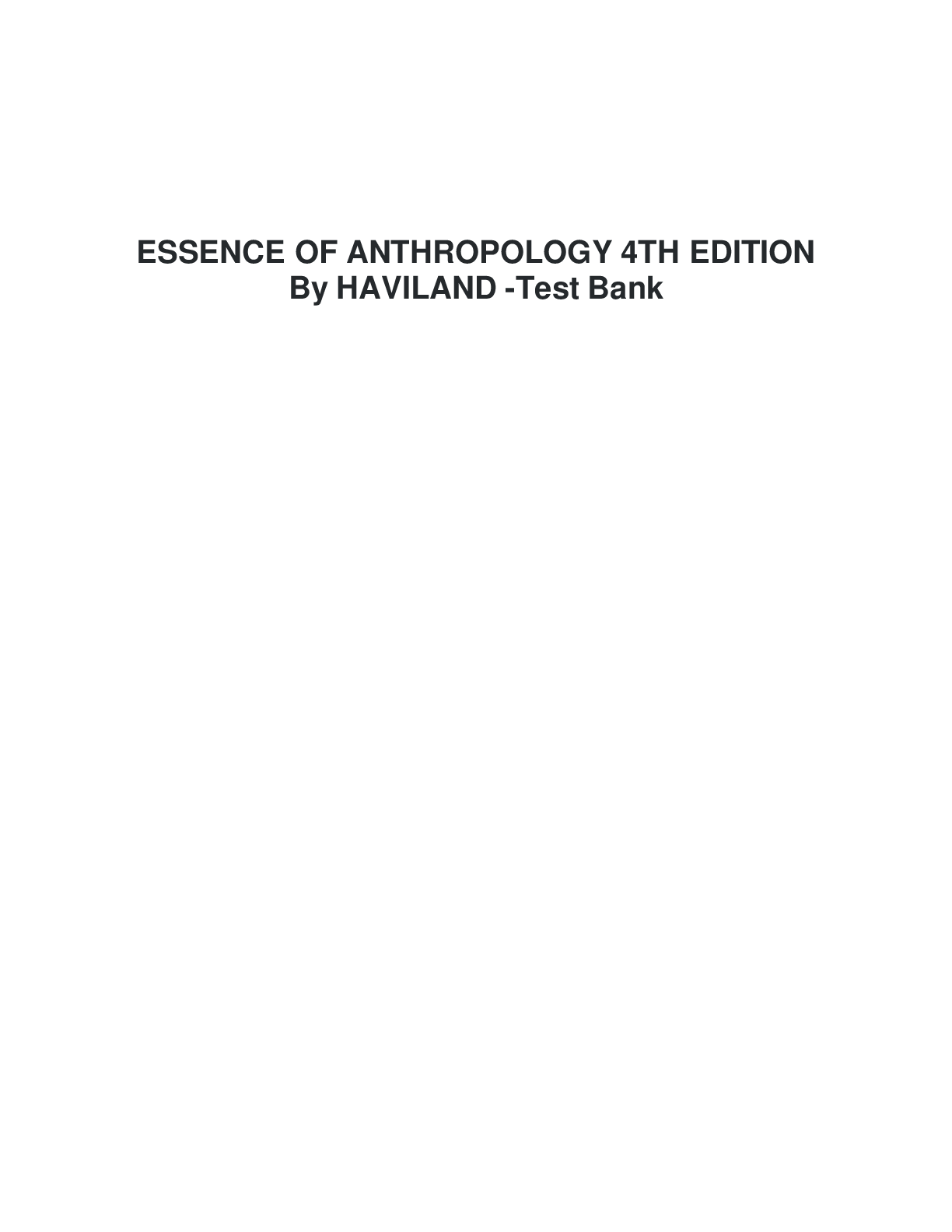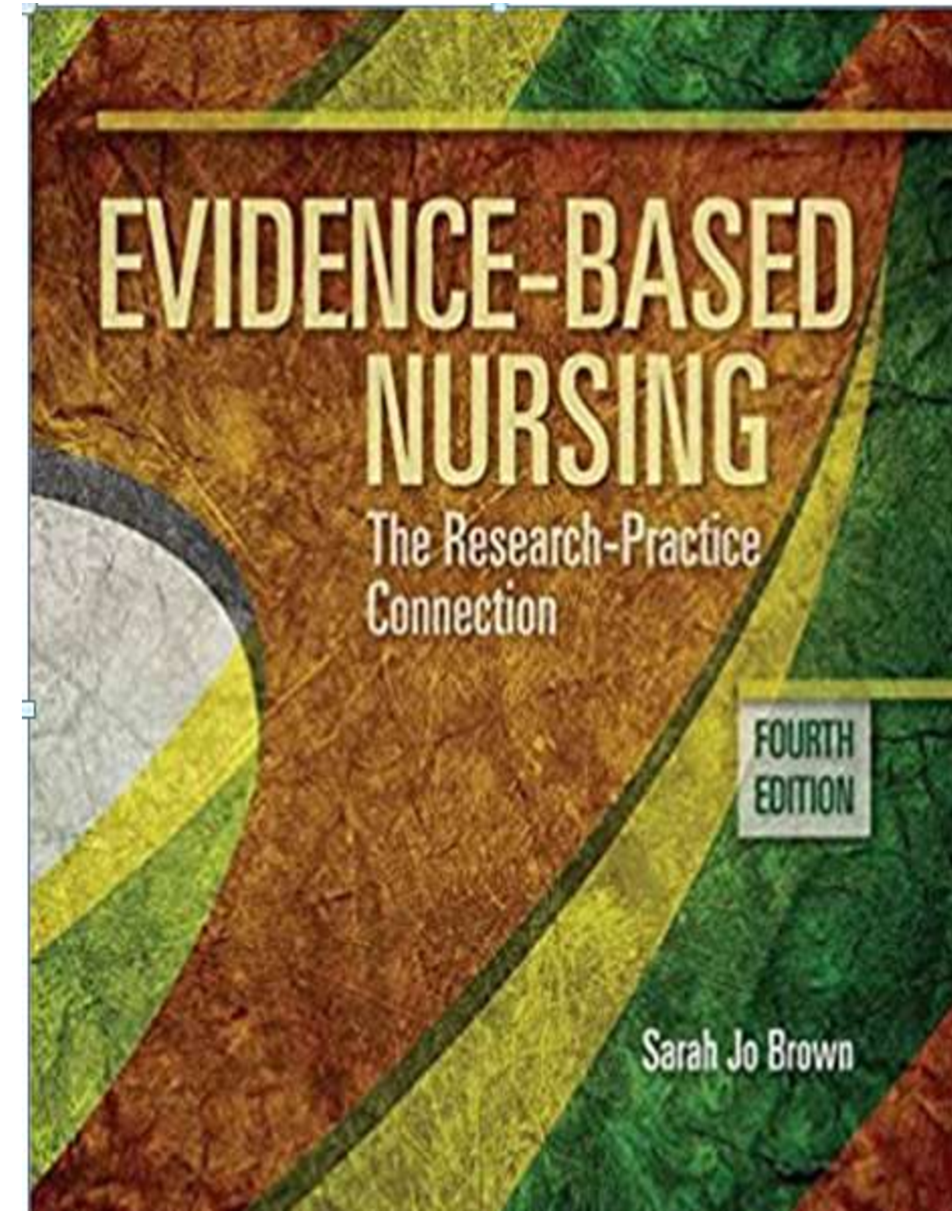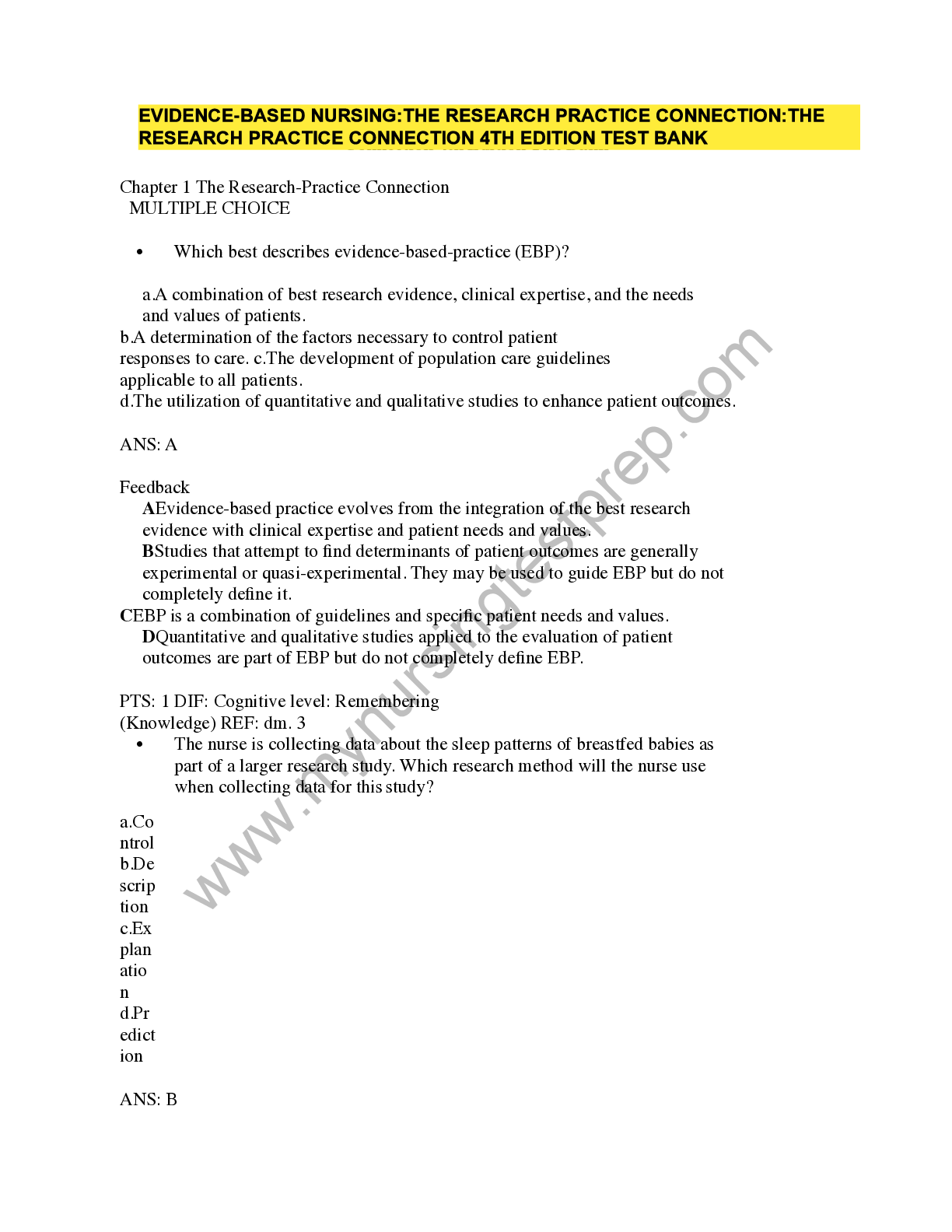Physiology > TEST BANK > Animal Physiology 4th edition Test Bank by Hills, Wyse, Anderson (All chapters Complete, Question an (All)
Animal Physiology 4th edition Test Bank by Hills, Wyse, Anderson (All chapters Complete, Question and Answers)
Document Content and Description Below
Animal Physiology 4th edition Test Bank by Hills, Wyse, Anderson (All chapters Complete, Question and Answers) Animal Physiology 4th edition Test Bank by Hills, Wyse, Anderson (All chapters Complete,... Question and Answers) Animal Physiology 4th edition Test Bank by Hills, Wyse, Anderson Test Bank to accompany Animal Physiology, Fourth Edition Hill • Wyse • Anderson Chapter 1: Animals and Environments: Function on the Ecological Stage TEST BANK QUESTIONS Multiple Choice 1. Which statement about the discipline of physiology is false? a. It is a key discipline for understanding how animals change over Earth’s history. b. It is a key discipline for understanding the fundamental biology of all animals. c. It is a key discipline for understanding human health and disease. d. It is a key discipline for understanding the health and disease of nonhuman animals. Answer: a Textbook Reference: The Importance of Physiology Bloom’s Category: 5. Evaluating 2. To understand how a fish propels itself by applying forces to the water, physiologists would study its a. biomechanics. b. evolution. c. ecology. d. cell physiology. Answer: a Textbook Reference: The Highly Integrative Nature of Physiology Bloom’s Category: 2. Understanding 3. The data in the graph below would be relevant to which subdiscipline of physiology? © 2016 Sinauer Associates, Inc. a. Evolution b. Cell physiology c. Morphology d. Ecology Answer: d Textbook Reference: The Highly Integrative Nature of Physiology Bloom’s Category: 2. Understanding 4. In the study of physiology, the term “_______” refers to the components of living animals and the interactions among those components that enable animals to perform as they do. a. feedback b. regulation c. natural selection d. mechanism Answer: d Textbook Reference: Mechanism and Origin: Physiology’s Two Central Questions Bloom’s Category: 1. Remembering 5. How is the light reaction in the firefly inhibited? a. Mitochondria prevent oxygen from reacting with luciferyl-AMP. b. Nitric oxide combines with oxygen to prevent reaction with luciferyl-AMP. c. ATP is prevented from combining with luciferin. d. Luciferase is prevented from catalyzing the reaction. Answer: a Textbook Reference: Mechanism and Origin: Physiology’s Two Central Questions Bloom’s Category: 2. Understanding 6. Which of the following is not needed in the mechanism of light production in the firefly? a. Oxygen b. ATP c. Light d. Luciferin Answer: c Textbook Reference: Mechanism and Origin: Physiology’s Two Central Questions Bloom’s Category: 2. Understanding 7. In the firefly, light is emitted when a. ATP combines with luciferin, forming luciferyl-AMP. b. released nitric oxide blocks the mitochondria’s use of oxygen. c. the electron-excited product of O2 and luciferyl-AMP returns to its ground state. d. luciferase is activated by oxygen. Answer: c Textbook Reference: Mechanism and Origin: Physiology’s Two Central Questions © 2016 Sinauer Associates, Inc. Bloom’s Category: 5. Evaluating 8. Which of the following is considered the “on” switch for the light-emitting reaction of the firefly? a. Oxygen b. Luciferase c. Nitric oxide d. ATP Answer: c Textbook Reference: Mechanism and Origin: Physiology’s Two Central Questions Bloom’s Category: 3. Applying 9. A physiological mechanism or other trait that is a product of evolution and is advantageous is called a. an adaptation. b. natural selection. c. adaptive significance. d. evolution. Answer: a Textbook Reference: Mechanism and Origin: Physiology’s Two Central Questions Bloom’s Category: 1. Remembering 10. What is the adaptive significance of light emission in the firefly? a. Female fireflies emit light in such a way that distinguishes their species. b. All fireflies emit light to lure prey. c. Male fireflies emit light to attract mates. d. Male fireflies emit light to evade predators. Answer: c Textbook Reference: Mechanism and Origin: Physiology’s Two Central Questions Bloom’s Category: 2. Understanding 11. Which of the following is a similarity between an octopus and a fish? a. The evolutionary adaptation of excellent vision b. The mechanism of vision c. The processing of visual signals before reaching the optic nerve d. The neuroanatomy of the eye Answer: a Textbook Reference: Mechanism and Origin: Physiology’s Two Central Questions Bloom’s Category: 5. Evaluating 12. Research in the field of _______ physiology emphasizes synthesis across levels of biological organization. a. evolutionary b. comparative c. environmental d. integrative © 2016 Sinauer Associates, Inc. Answer: d Textbook Reference: This Book’s Approach to Physiology Bloom’s Category: 2. Understanding 13. Which statement regarding animals is true? a. There is no distinction between an animal and its environment. b. Once adults, animals are structurally static. c. All animals require energy to maintain their organization. d. Body size is significant in the lives of only small animals. Answer: c Textbook Reference: Animals Bloom’s Category: 5. Evaluating 14. Most cells of an animal a. are exposed to the external environment. b. are exposed to the internal environment. c. fluctuate between exposure to the external environment and the internal environment. d. turn over while being exposed to the internal environment. Answer: b Textbook Reference: Animals Bloom’s Category: 2. Understanding 15.–17. Refer to the figures below. 15. Which figure refers to a physiological trait that is regulated by an organism? © 2016 Sinauer Associates, Inc. a. I b. II c. III d. IV Answer: b Textbook Reference: Animals Bloom’s Category: 3. Applying 16. A migrating salmon regulates its internal Cl– concentration, shown in figure _______, while conforming to water temperature, shown in figure _______. a. I; II b. II; I c. II; IV d. I; III Answer: b Textbook Reference: Animals Bloom’s Category: 4. Analyzing 17. Figure _______ shows an animal’s regulation of its body temperature as the external temperature increases. Figure _______ shows no regulation of its body temperature as external temperature increases. a. I; II b. II; I c. II; IV d. II; III Answer: b Textbook Reference: Animals Bloom’s Category: 3. Applying 18. Which statement regarding physiological conformity and regulation is true? a. All animals will eventually conform. b. Animals are either regulators or conformers. c. An animal cannot be both an ion regulator and a temperature conformer. d. Conforming is more metabolically expensive than regulating. Answer: a Textbook Reference: Animals Bloom’s Category: 5. Evaluating 19. The functioning of regulatory mechanisms that automatically make adjustments to maintain internal constancy is called a. conformity. b. feedback. c. homeostasis. d. regulation. Answer: c Textbook Reference: Animals © 2016 Sinauer Associates, Inc. Bloom’s Category: 1. Remembering 20. During childbirth, muscular contractions acting to expel the fetus from the uterus induce hormonal signals that induce even more intense contractions. This is an example of a. homeostasis. b. negative feedback. c. a set point. d. positive feedback. Answer: d Textbook Reference: Animals Bloom’s Category: 2. Understanding 21. Physiological changes that occur by alteration of gene frequencies over the course of many generations are referred to as _______ changes. a. acute b. chronic c. evolutionary d. developmental Answer: c Textbook Reference: Animals Bloom’s Category: 2. Understanding 22. _______ is an example of “abandoning constancy” during thermoregulation. a. Sweating b. Shivering c. Hibernating d. Huddling Answer: c Textbook Reference: Animals Bloom’s Category: 3. Applying 23. What is the principal advantage of conformity? a. The process requires a large amount of energy. b. It allows cells to maintain a steady state. c. Very little energy is used by this process. d. Cells are subject to changes in their conditions. Answer: c Textbook Reference: Animals Bloom’s Category: 2. Understanding 24. Sweating in response to heat is an example of a(n) a. acute change. b. chronic change. c. evolutionary change. d. developmental change. © 2016 Sinauer Associates, Inc. Answer: a Textbook Reference: Animals Bloom’s Category: 2. Understanding 25.–26. Refer to the figure below. 25. What type of physiological response does the figure refer to? a. Chronic response b. Acute response c. Evolutionary response d. Developmental response Answer: a Textbook Reference: Animals Bloom’s Category: 3. Applying 26. If the heat exposure were removed, the line in the diagram would a. continue to show a plateau. b. drop sharply. c. gradually drop to its initial starting point. d. drop but be maintained somewhere at the middle level. Answer: c Textbook Reference: Animals Bloom’s Category: 4. Analyzing 27. Which response is the longest lasting? a. Acute response b. Chronic response c. Evolutionary response d. Developmental response Answer: c © 2016 Sinauer Associates, Inc. Textbook Reference: Animals Bloom’s Category: 2. Understanding 28. Rainbow trout captured and brought into a lab aquarium undergo a chronic adjustment to the conditions in the lab. This process is called a. phenotypic plasticity. b. feedback inhibition. c. acclimatization. d. acclimation. Answer: d Textbook Reference: Animals Bloom’s Category: 2. Understanding 29.–31. Refer to the figure below. 29. What statistical method was used to draw the trend line in the figure? a. Phylogenetically independent contrasts b. Ordinary least squares regression c. Weight-specific mean d. Logarithmic scaling Answer: b Textbook Reference: Animals Bloom’s Category: 3. Applying 30. According to the figure, what is the expected gestation period of a warthog? a. 20 weeks © 2016 Sinauer Associates, Inc. b. 24 weeks c. 30 weeks d. 55 weeks Answer: c Textbook Reference: Animals Bloom’s Category: 3. Applying [Show More]
Last updated: 11 months ago
Preview 1 out of 674 pages
 - libgen.png)
Reviews( 0 )
Document information
Connected school, study & course
About the document
Uploaded On
Sep 08, 2021
Number of pages
674
Written in
Additional information
This document has been written for:
Uploaded
Sep 08, 2021
Downloads
0
Views
64

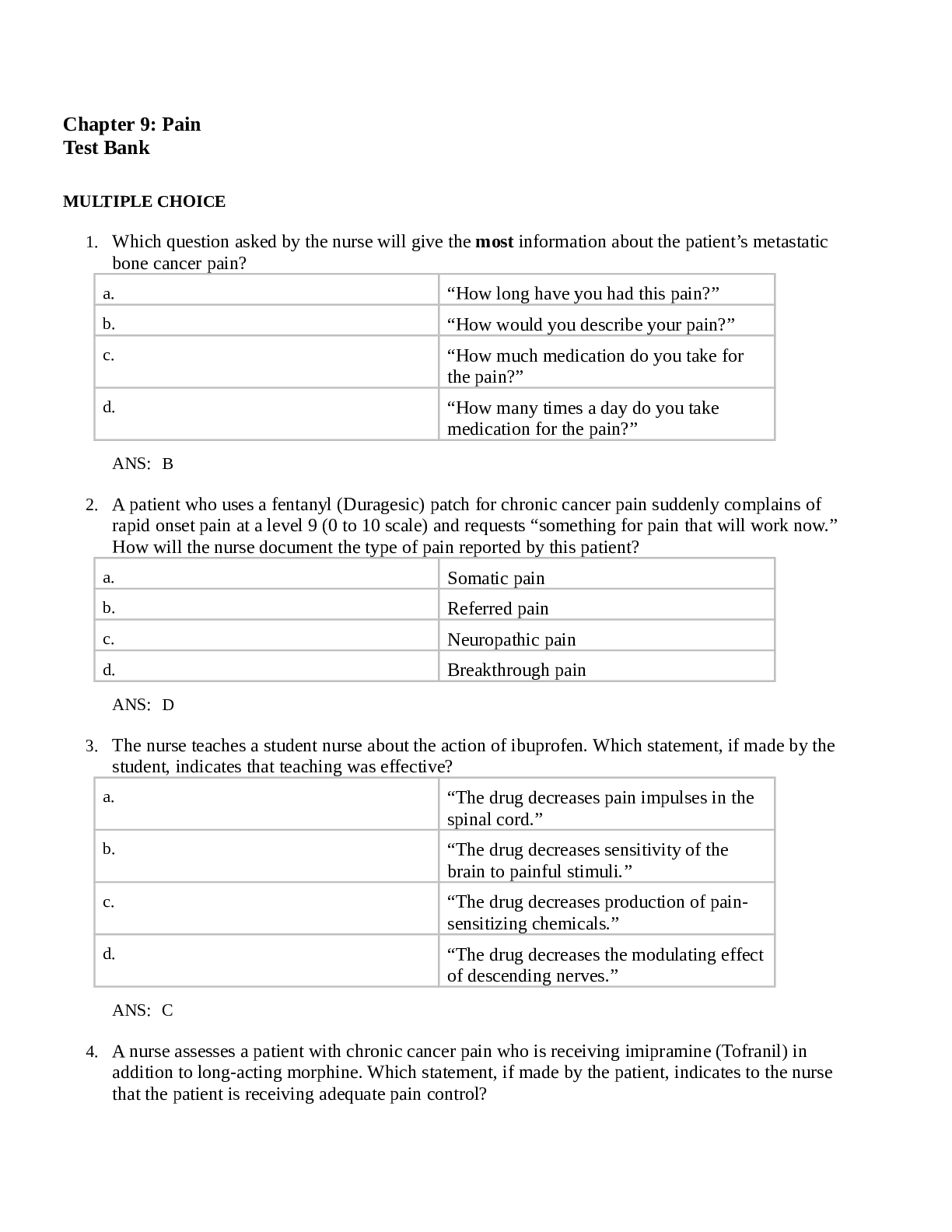
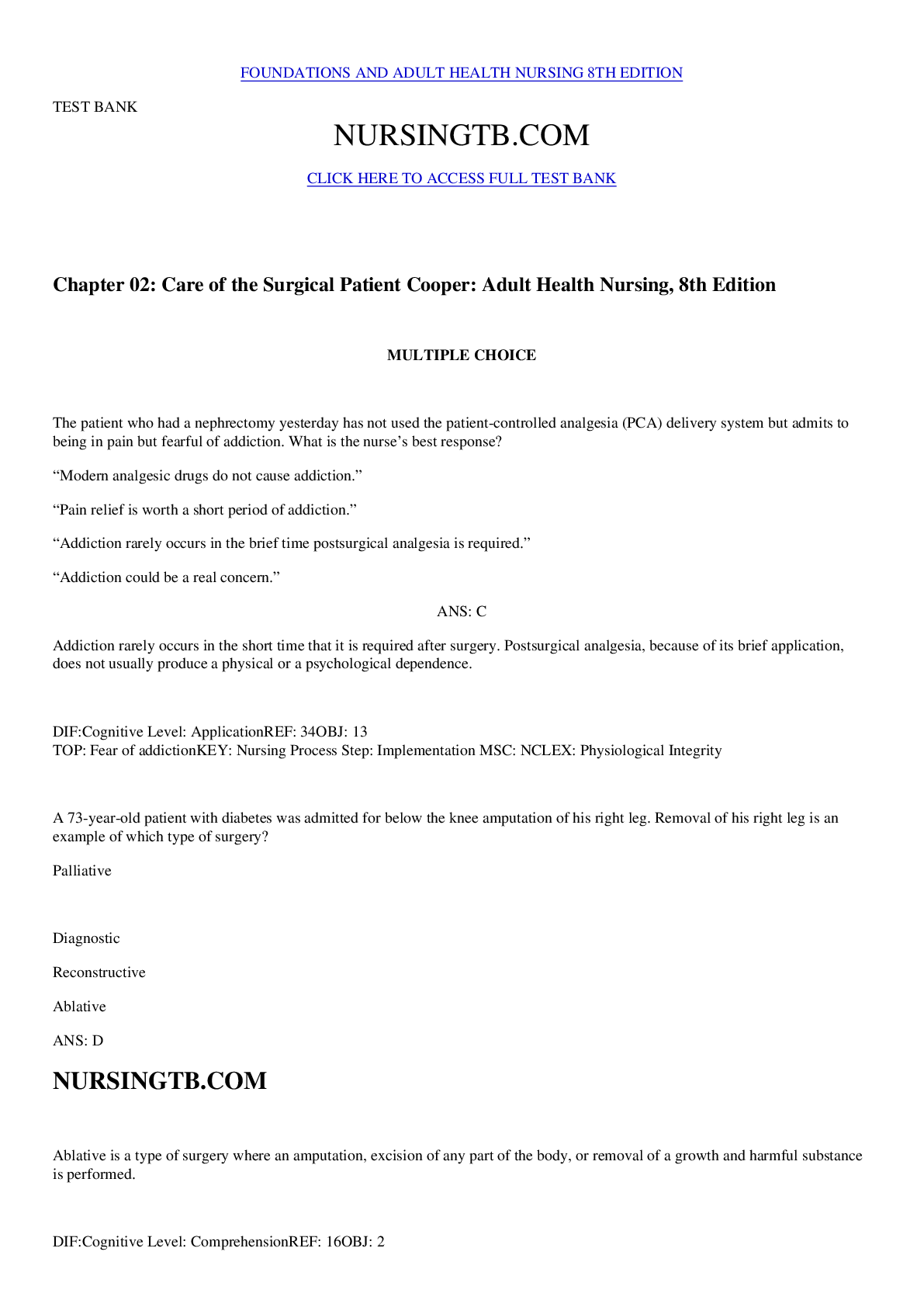
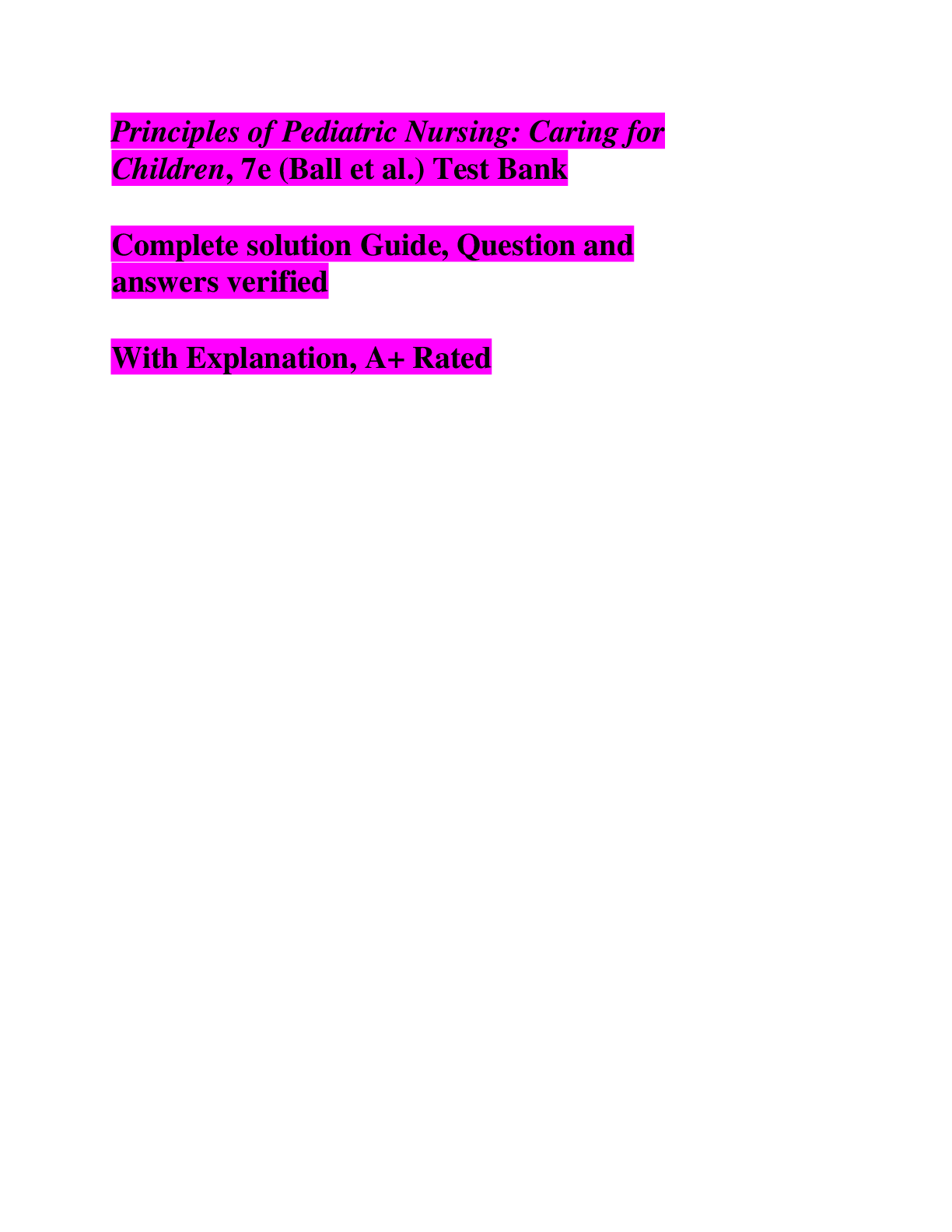
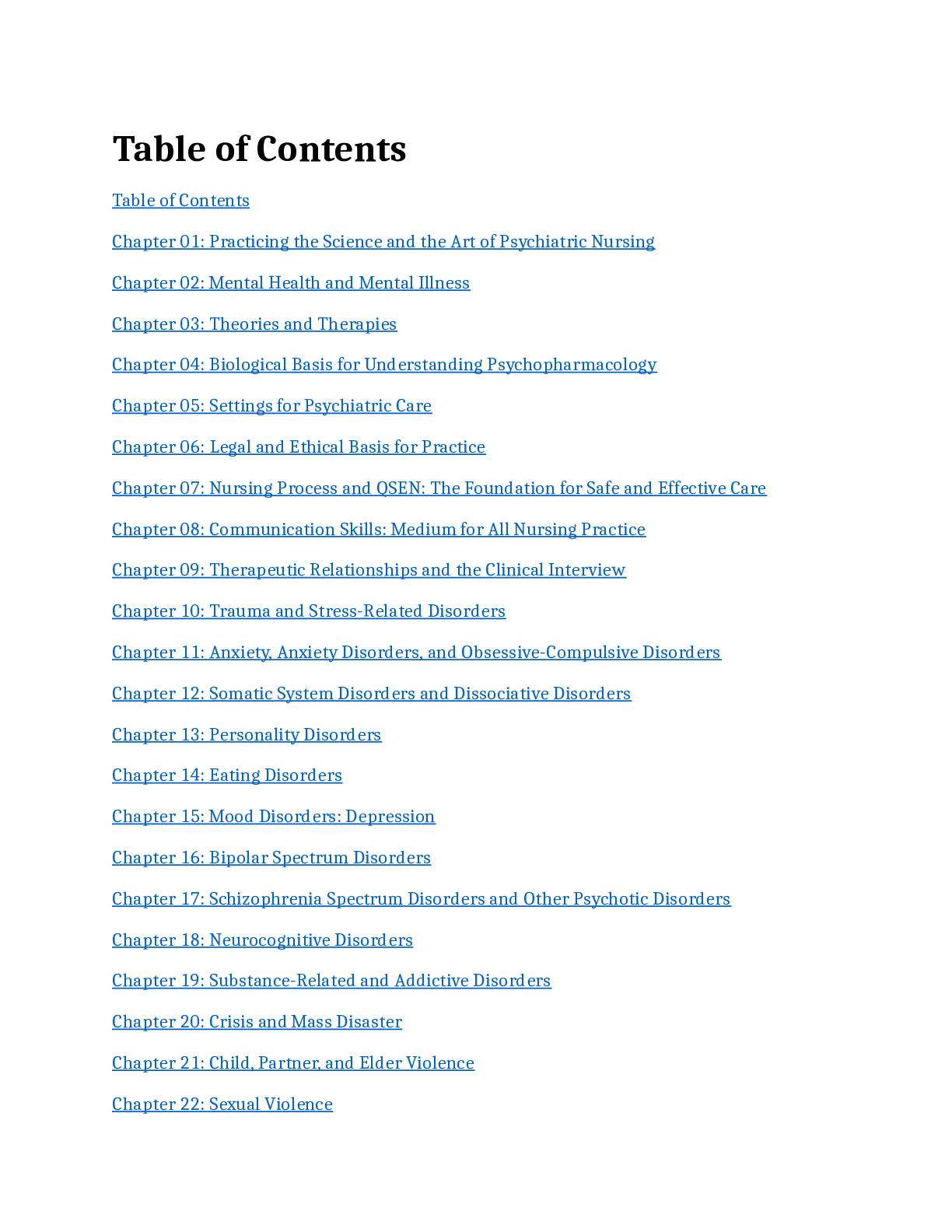
.png)


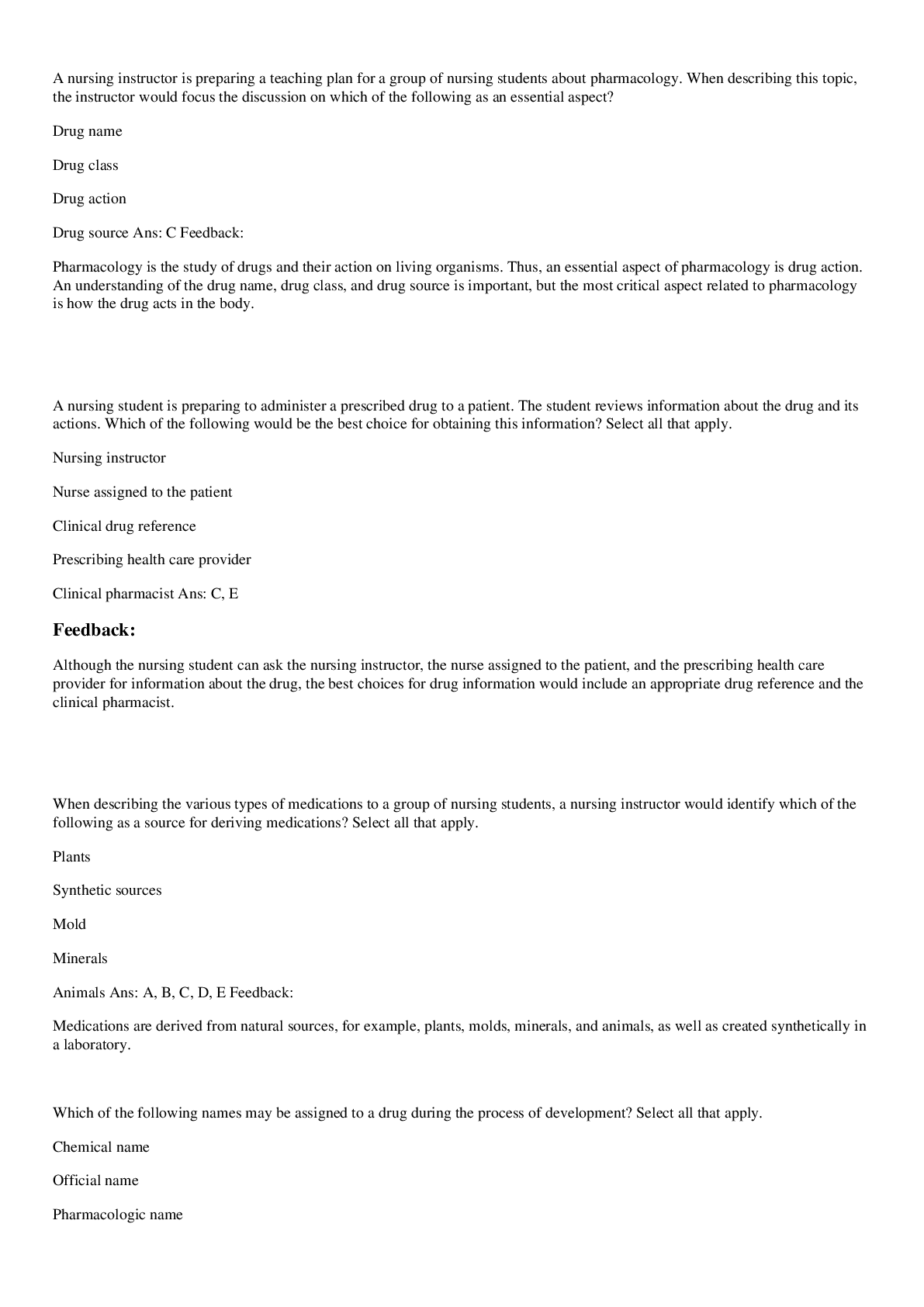
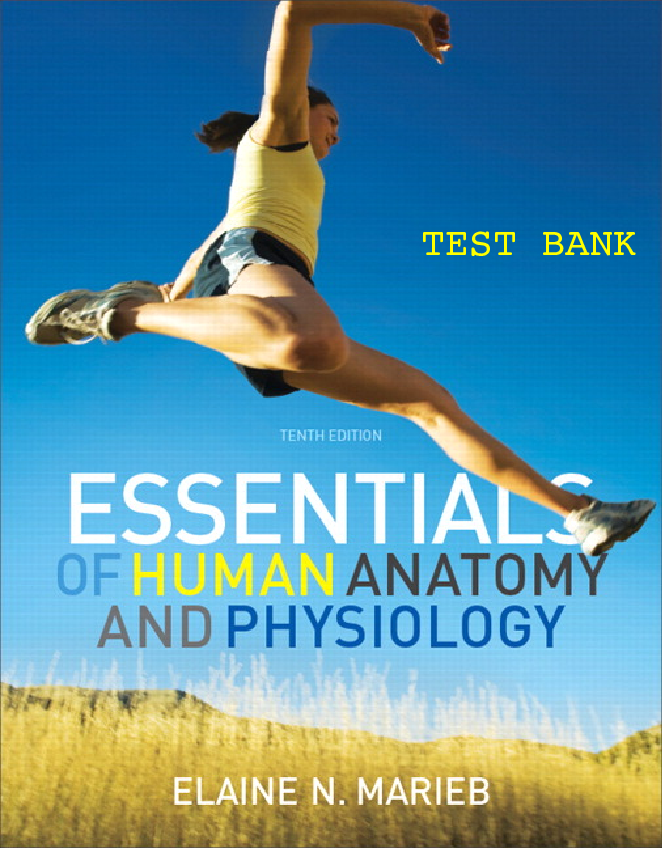
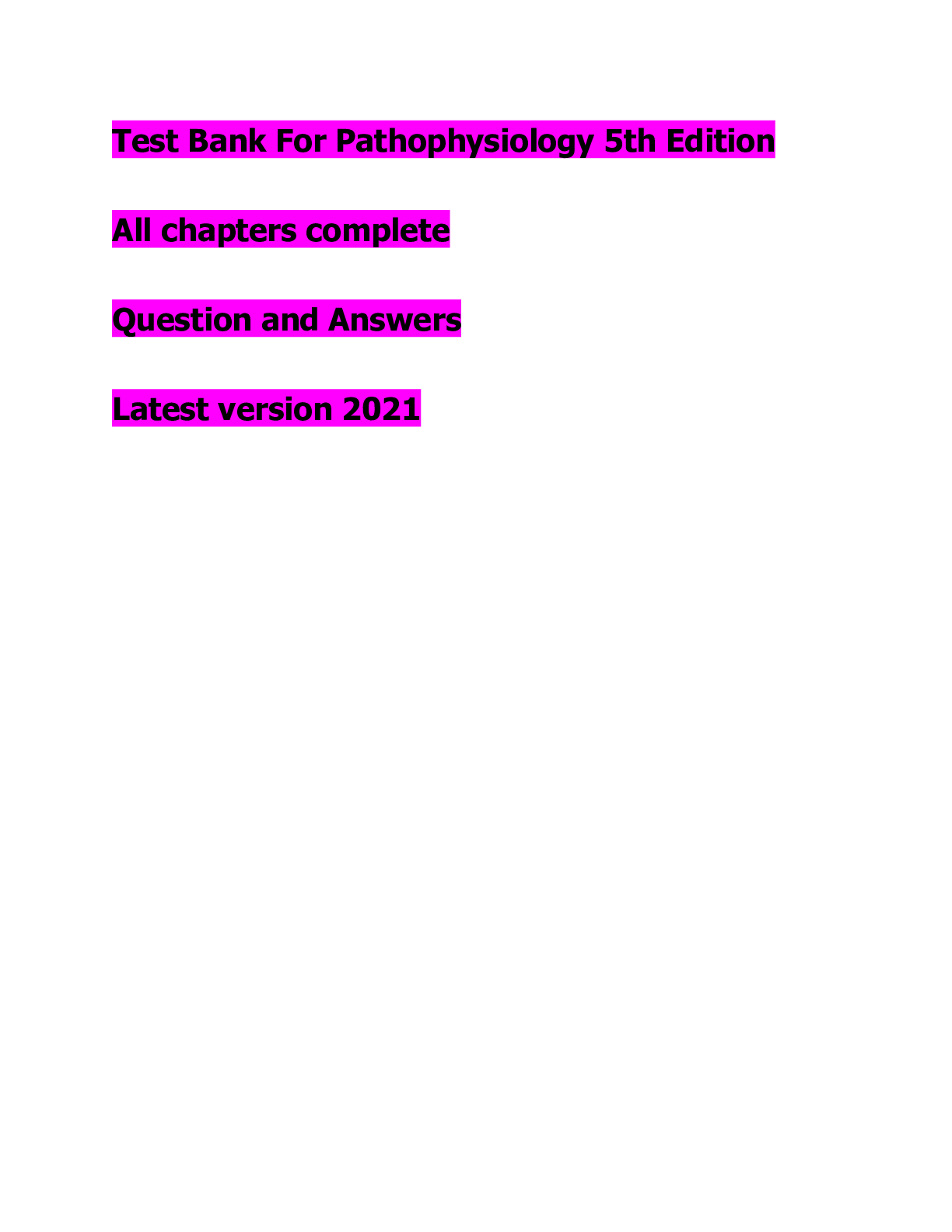

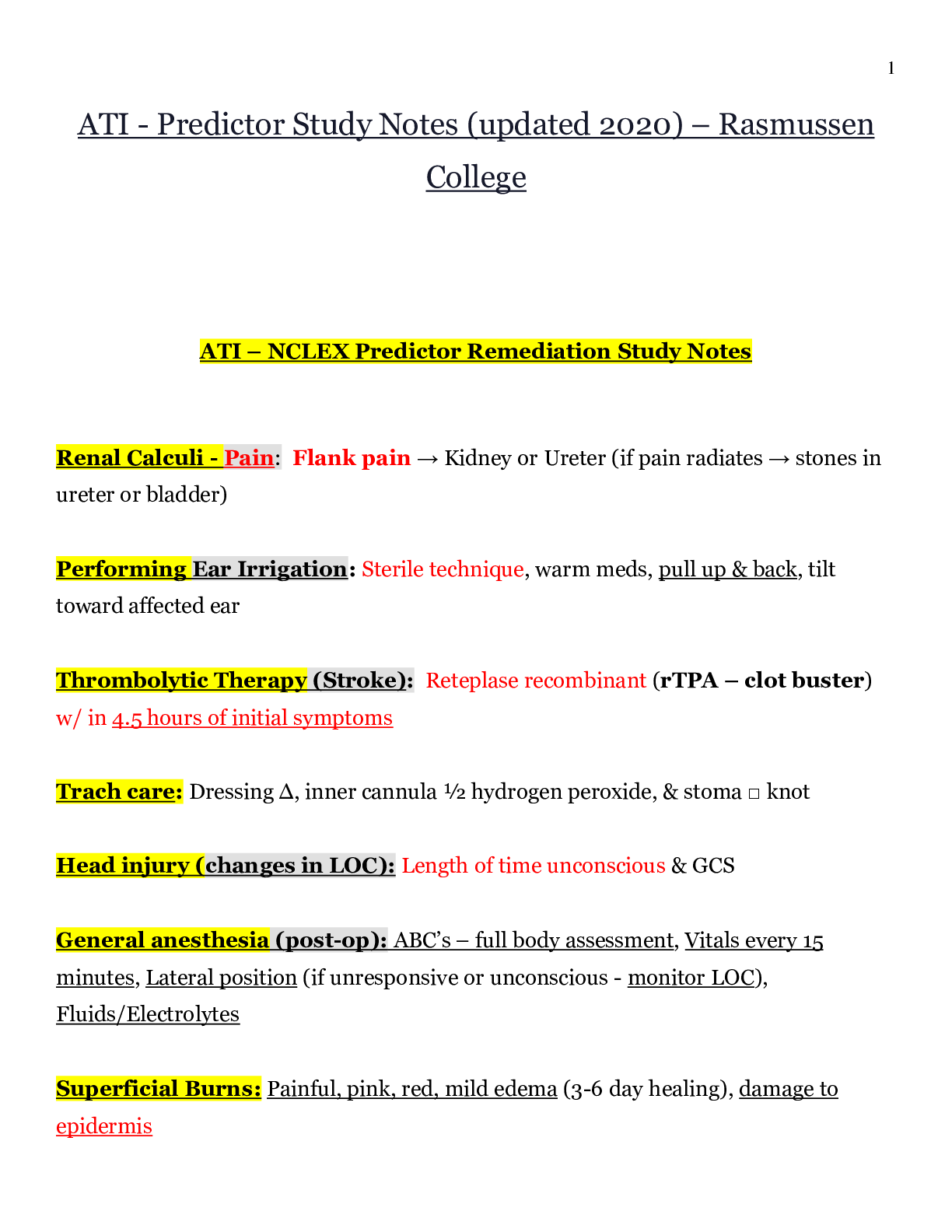
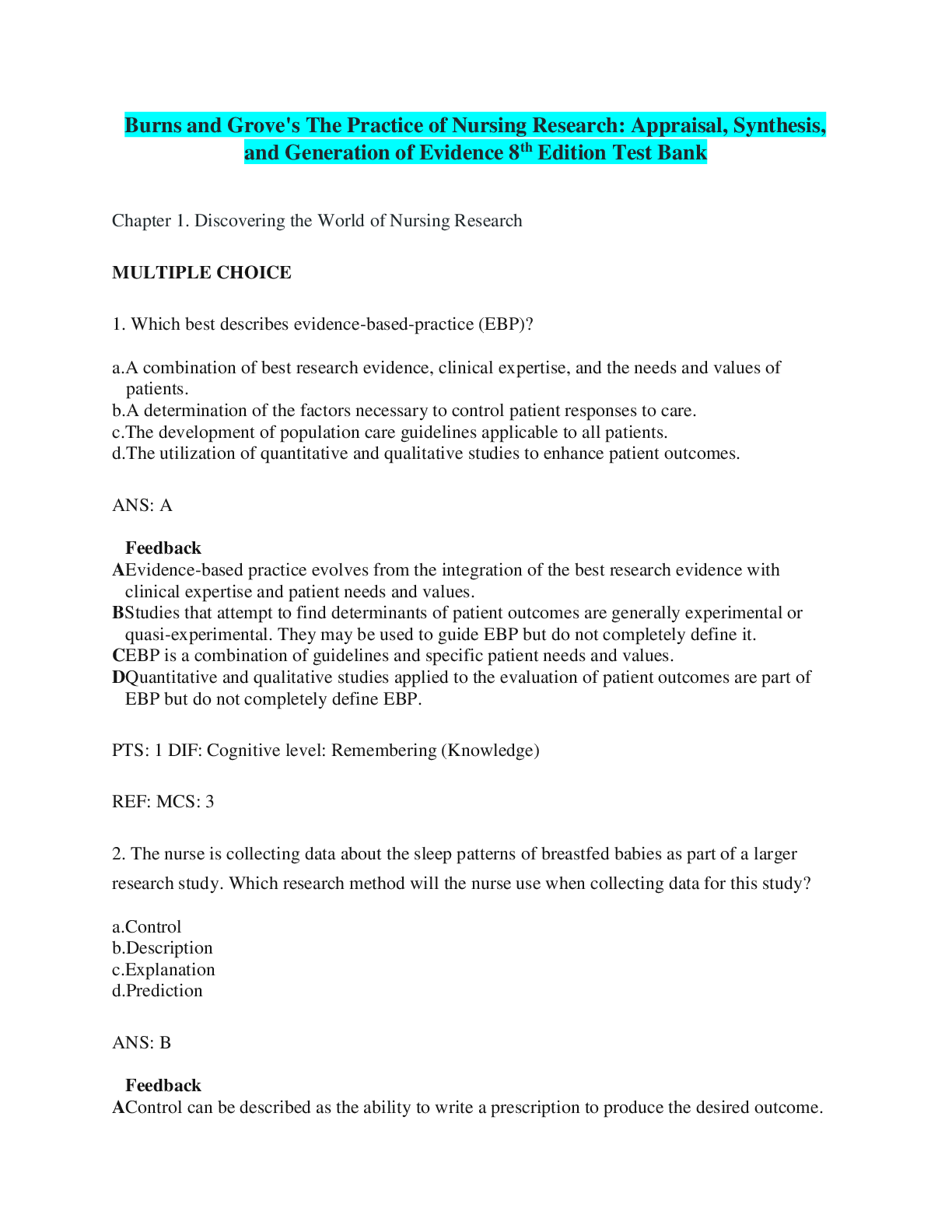
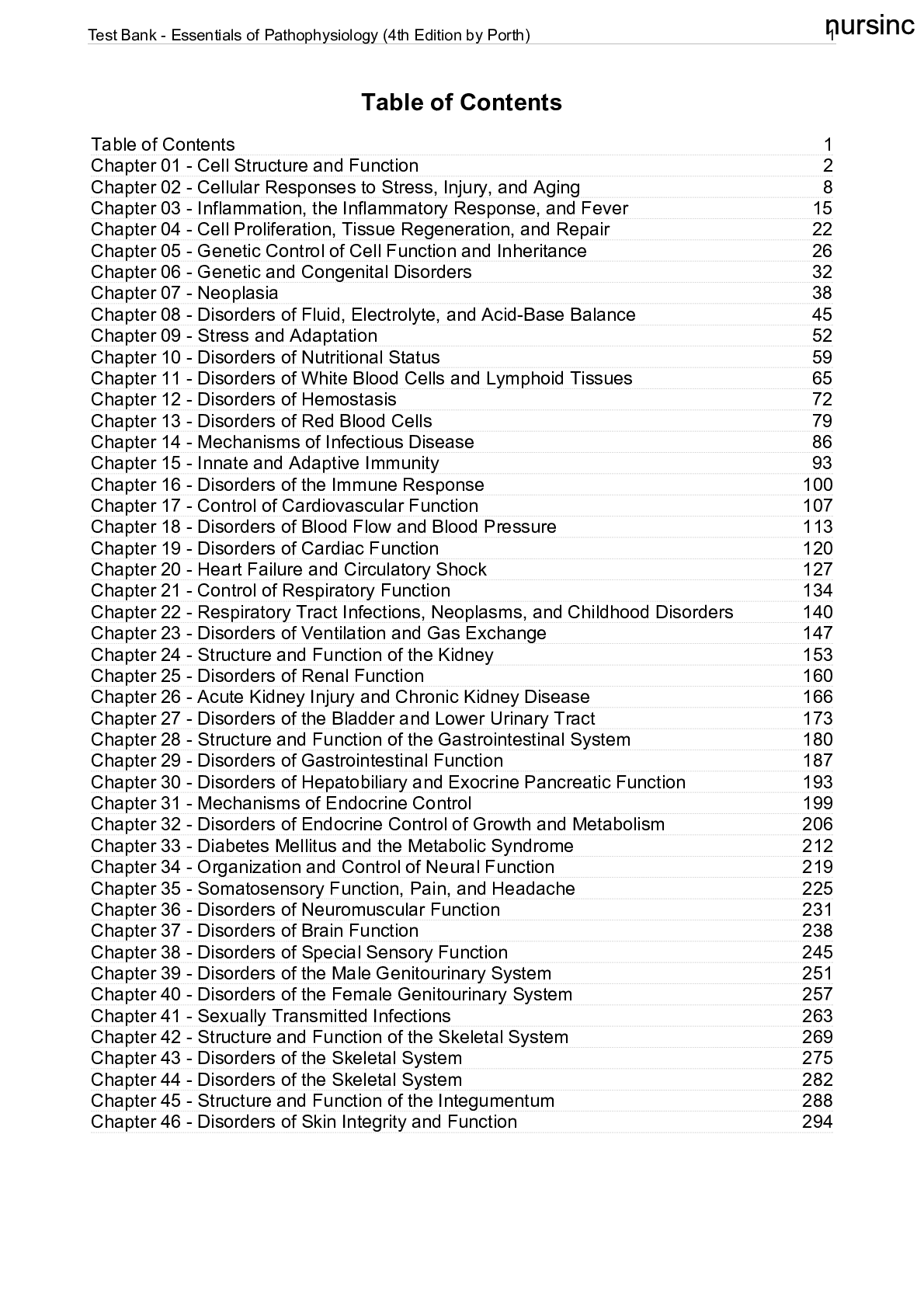
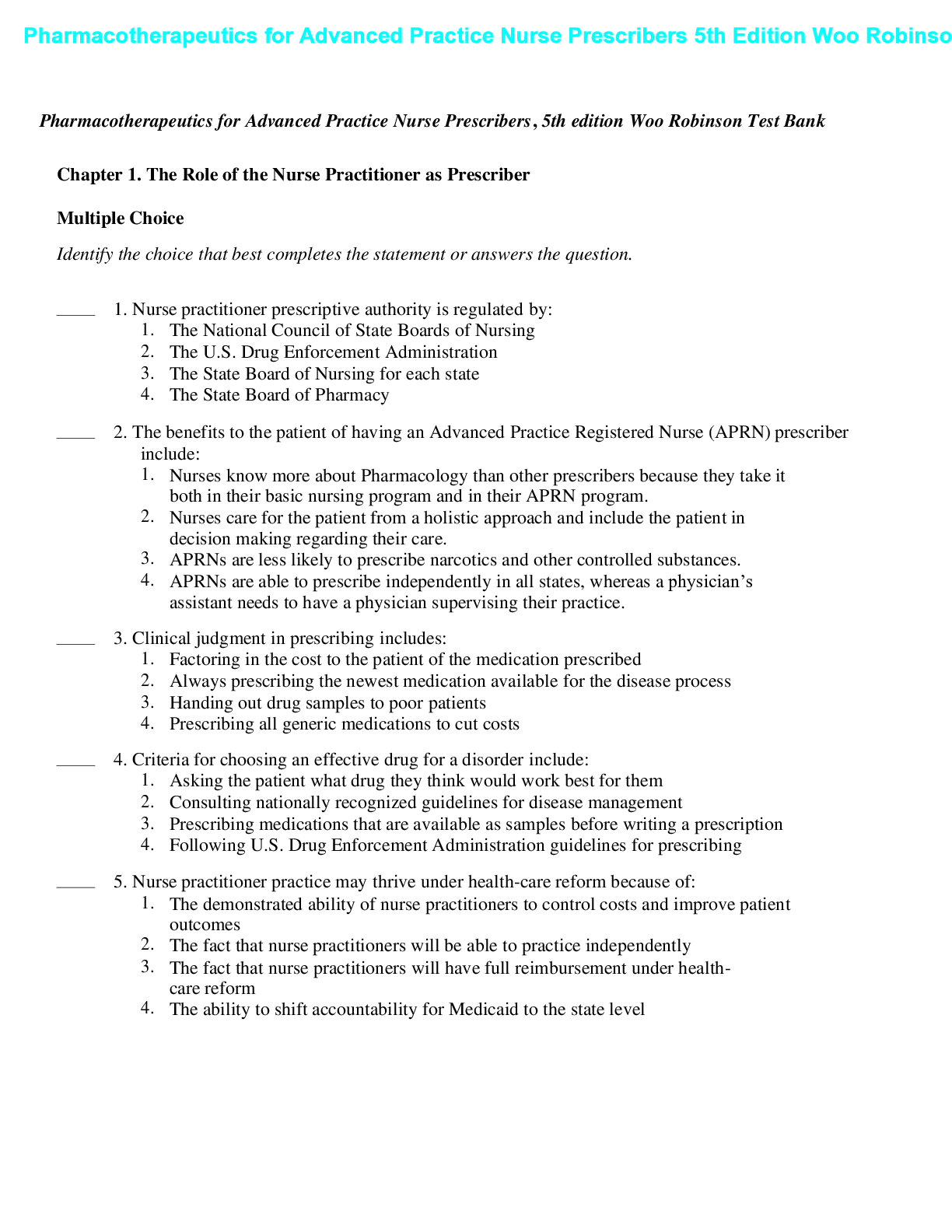
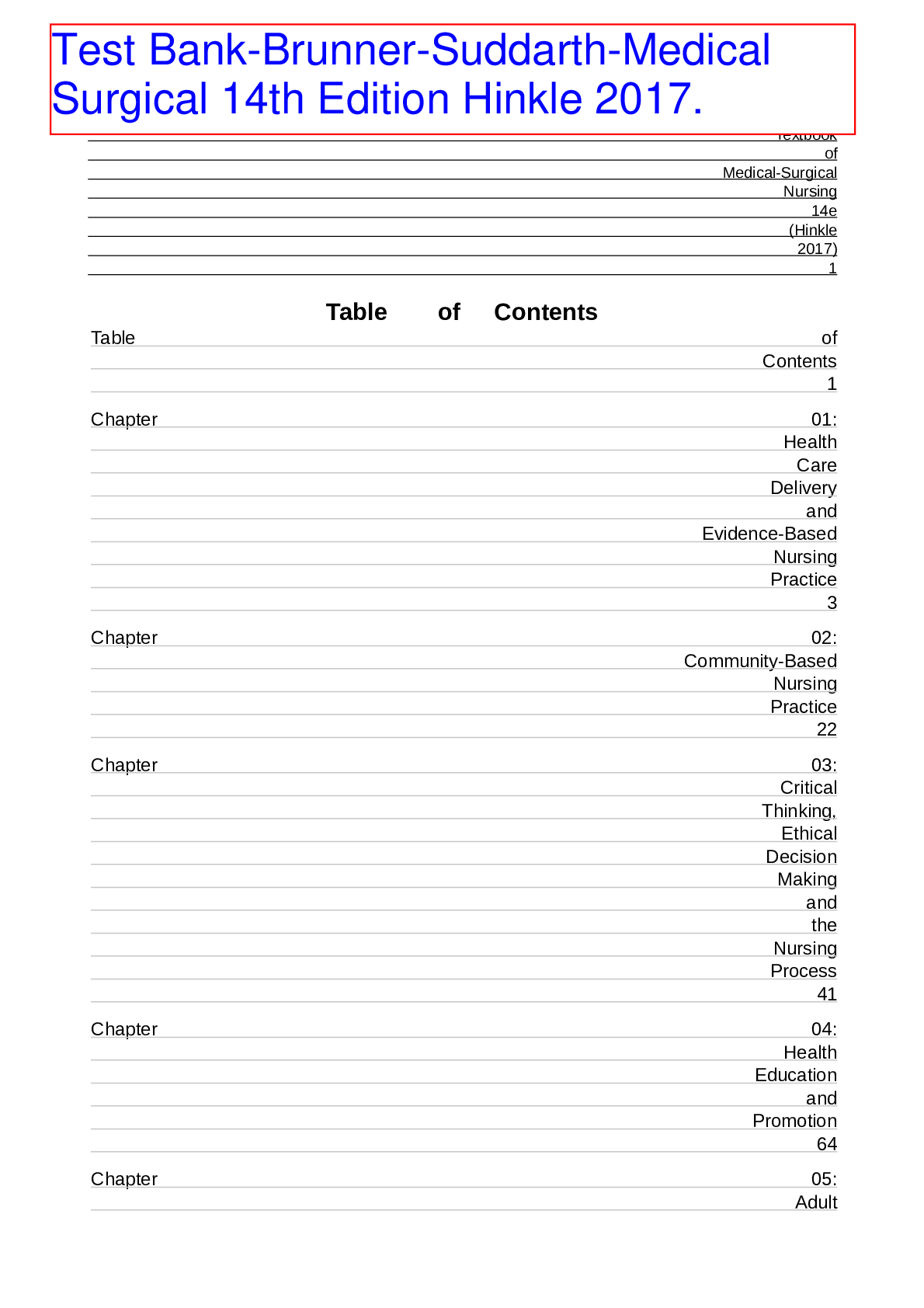
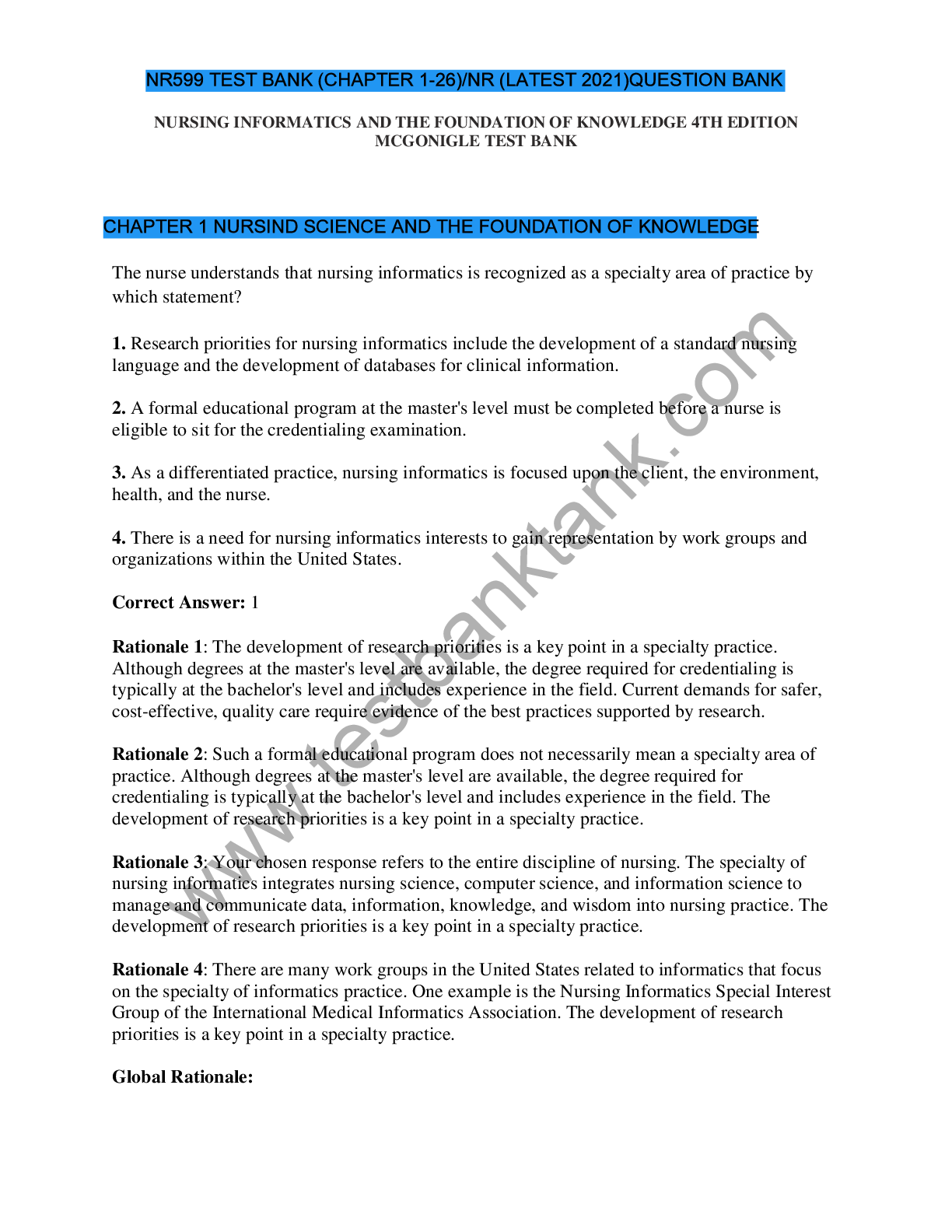
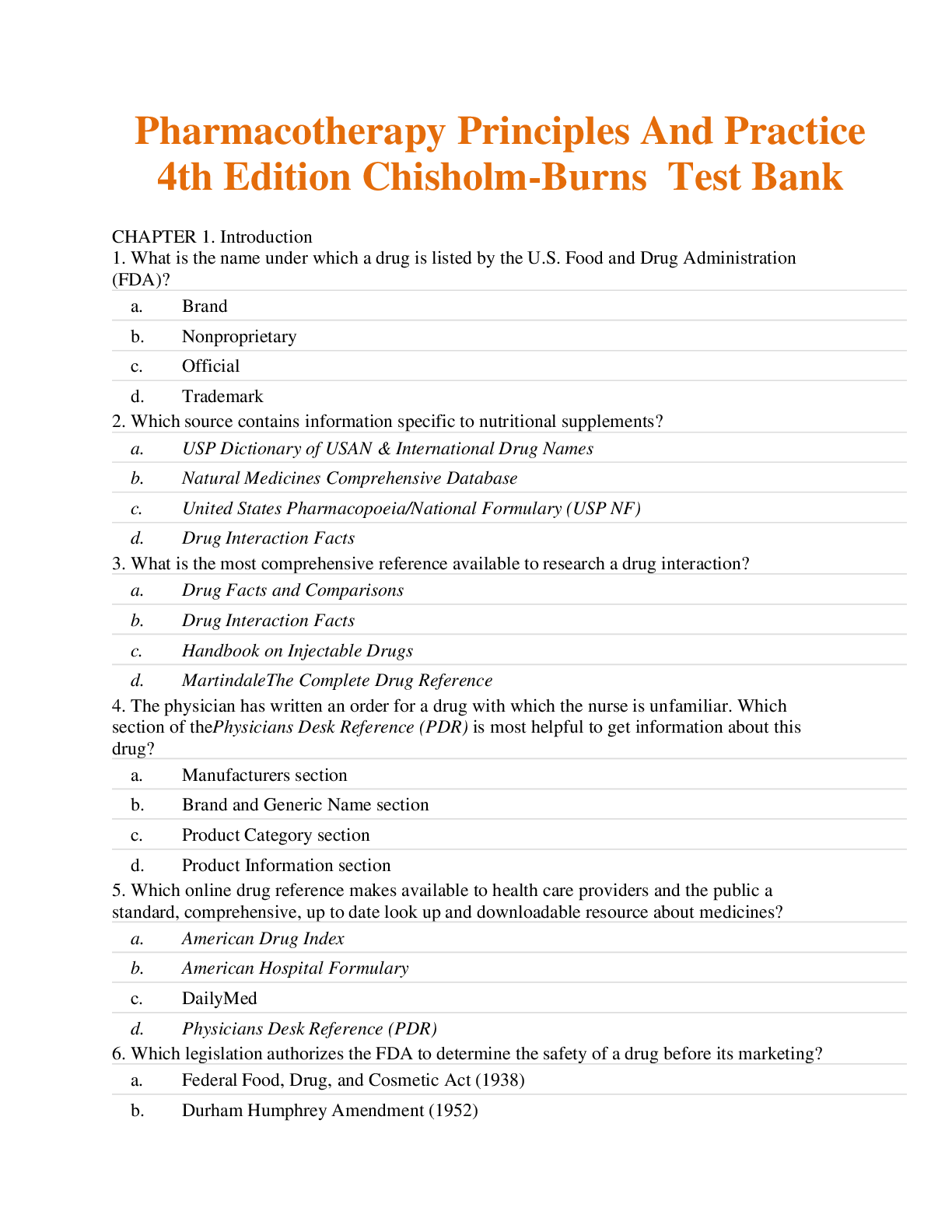
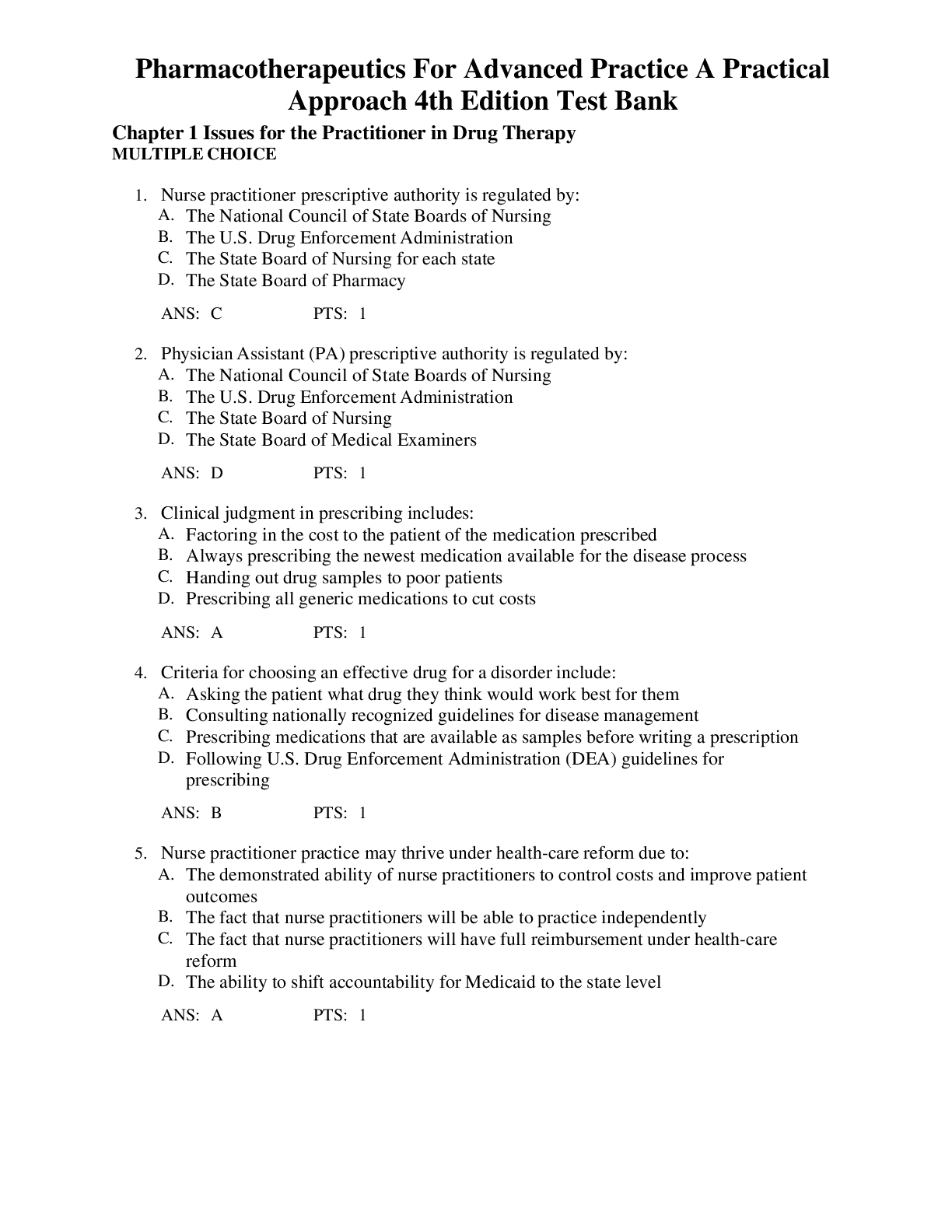
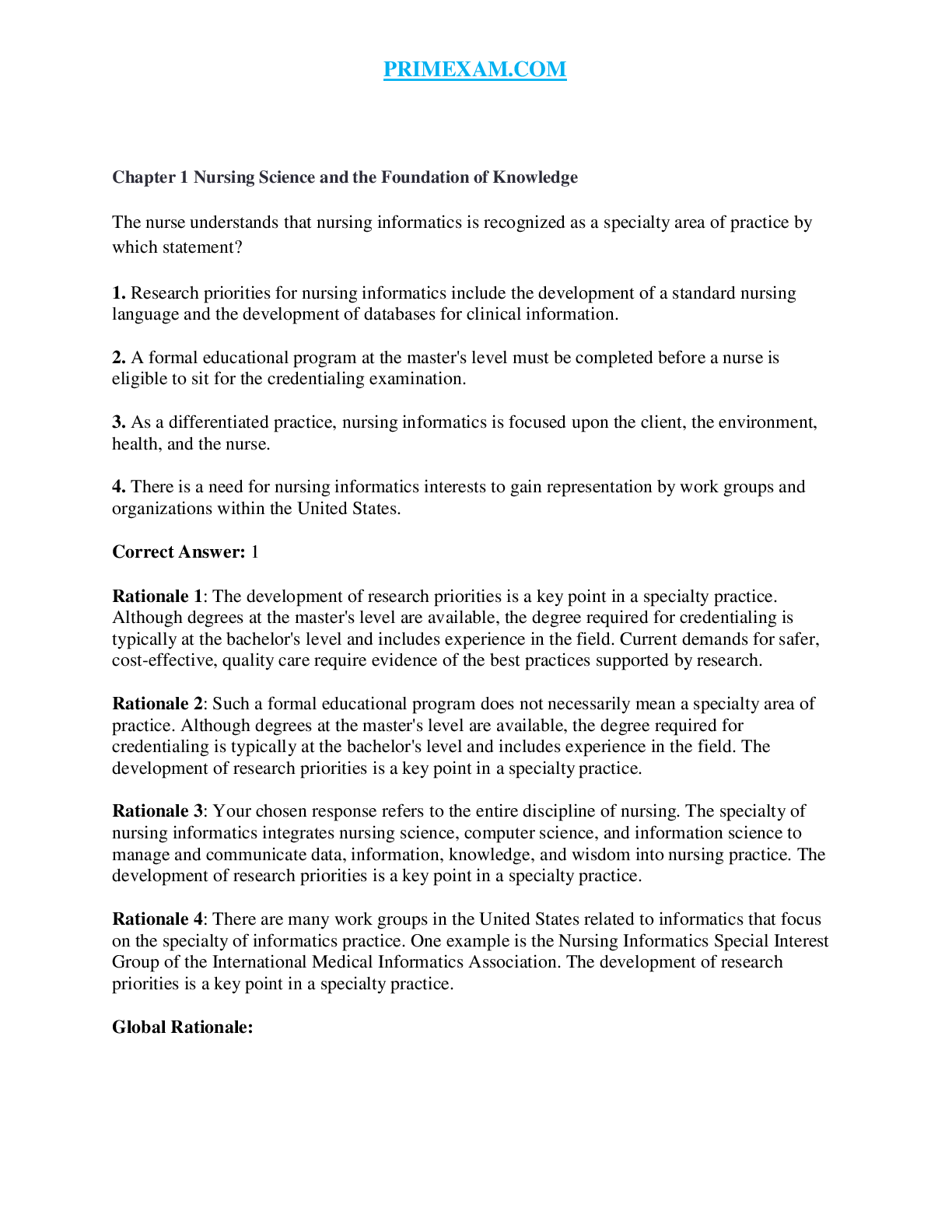
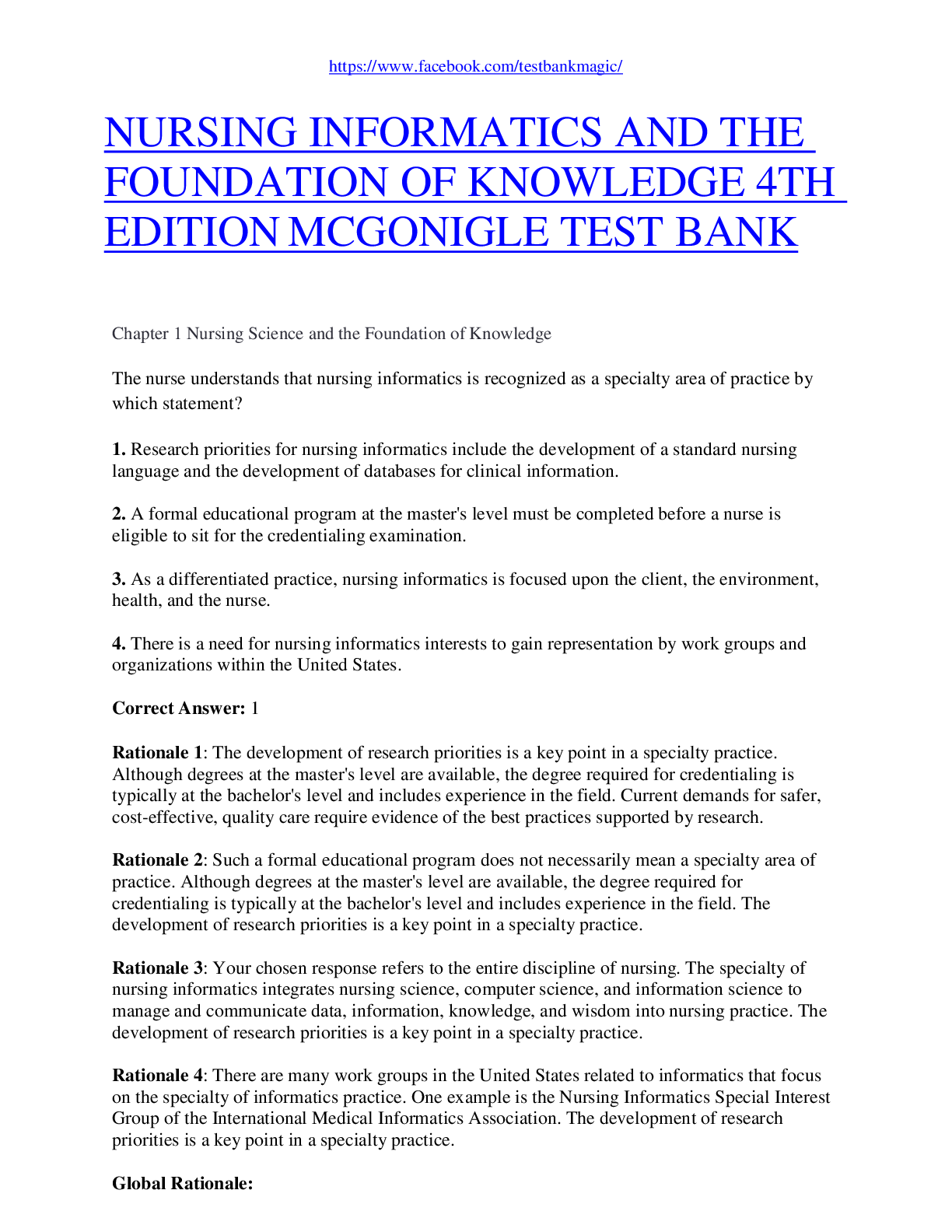
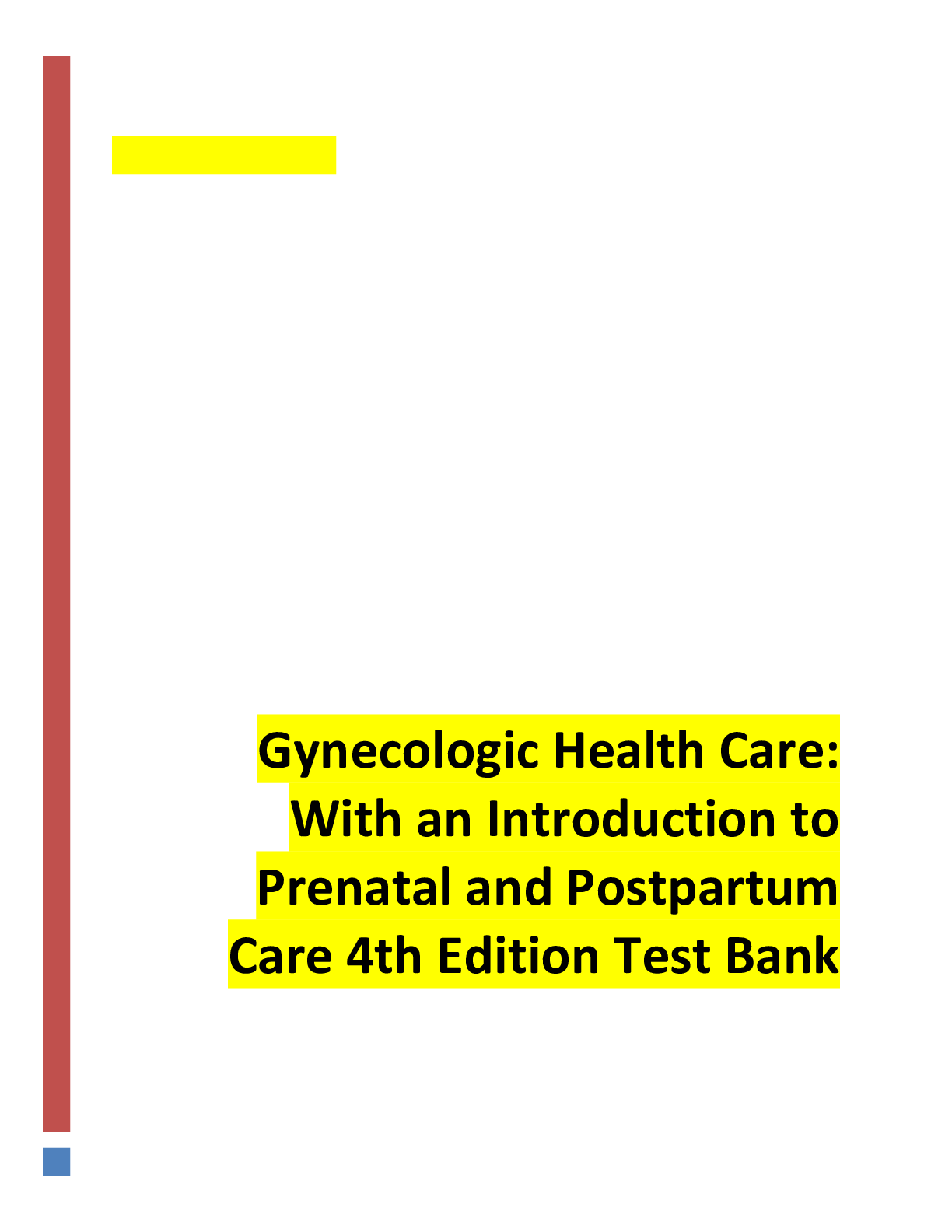
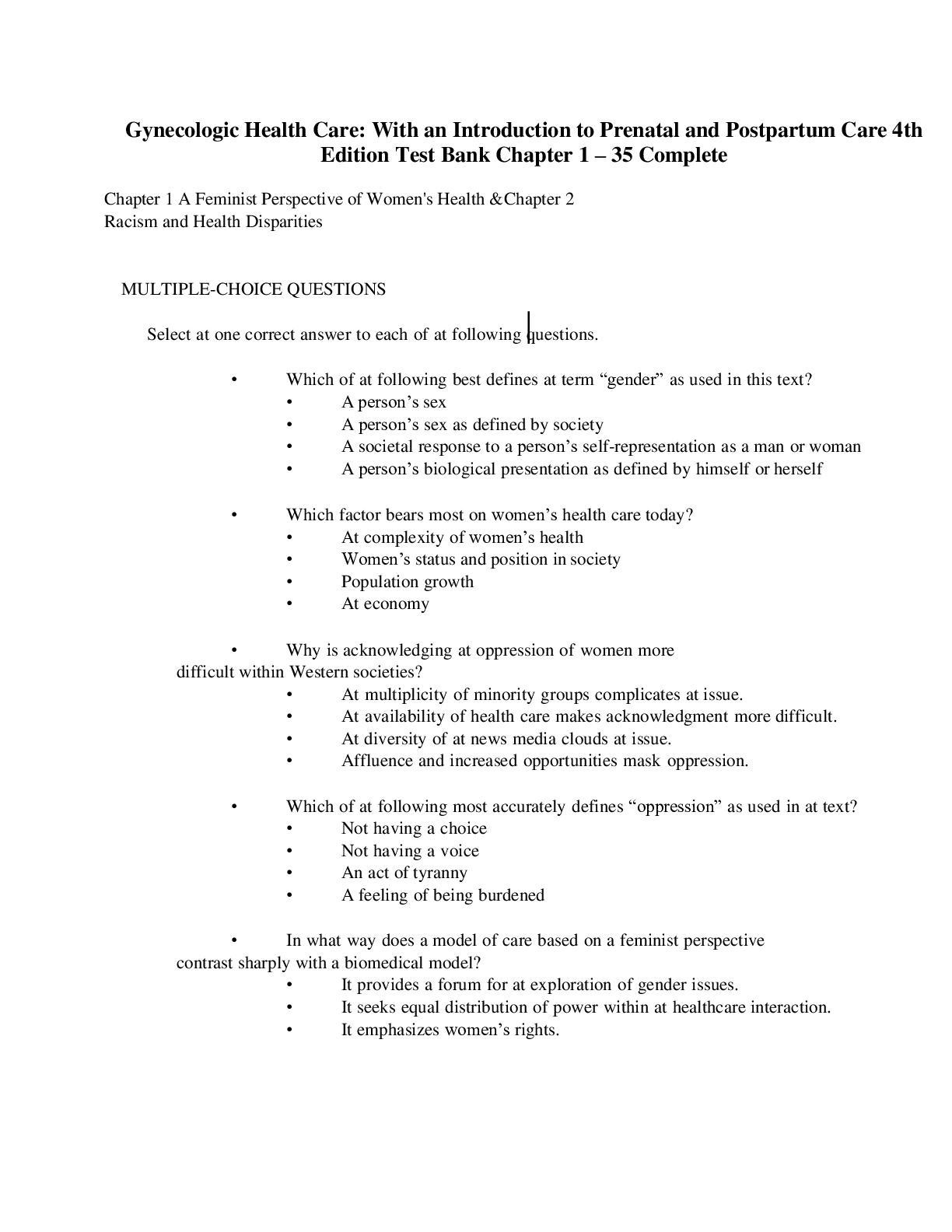
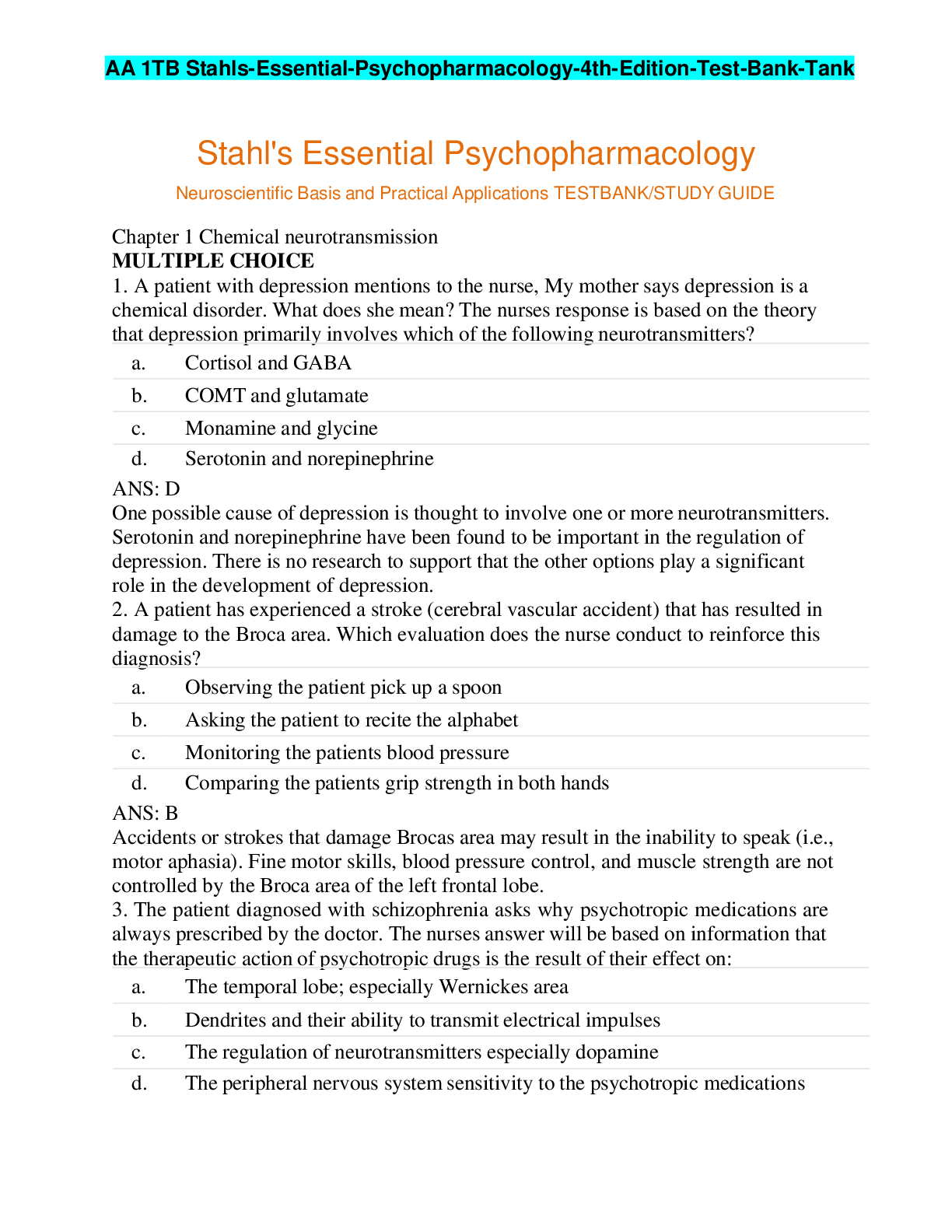
.png)
.png)
